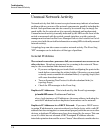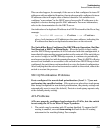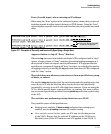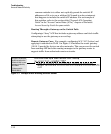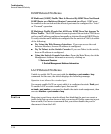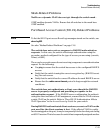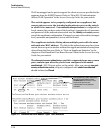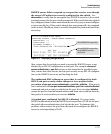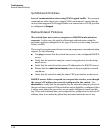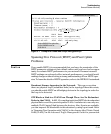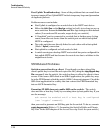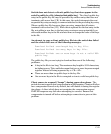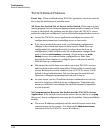
Troubleshooting
Unusual Network Activity
VLAN as untagged on the port to support the client access, as specified in the
response from the RADIUS server. Refer to “How 802.1X Authentication
Affects VLAN Operation” in the Access Security Guide for your switch.
The switch appears to be properly configured as a supplicant, but
cannot gain access to the intended authenticator port on the switch
to which it is connected. If aaa authentication port-access is configured for
Local, ensure that you have entered the local login (operator-level) username
and password of the authenticator switch into the identity and secret parame-
ters of the supplicant configuration. If instead, you enter the enable (manager-
level) username and password, access will be denied.
The supplicant statistics listing shows multiple ports with the same
authenticator MAC address. The link to the authenticator may have been
moved from one port to another without the supplicant statistics having been
cleared from the first port. Refer to “Note on Supplicant Statistics” in the
chapter on Port-Based and User-Based Access Control in the Access Security
Guide for your switch.
The show port-access authenticator < port-list > command shows one or more
ports remain open after they have been configured with control
unauthorized. 802.1X is not active on the switch. After you execute aaa port-
access authenticator active, all ports configured with control unauthorized
should be listed as Closed.
Port A9 shows an “Open” status even
though Access Control is set to
Unauthorized (Force Auth). This is
because the port-access
authenticator has not yet been
activated.
Figure C-5. Authenticator Ports Remain “Open” Until Activated
C-16



